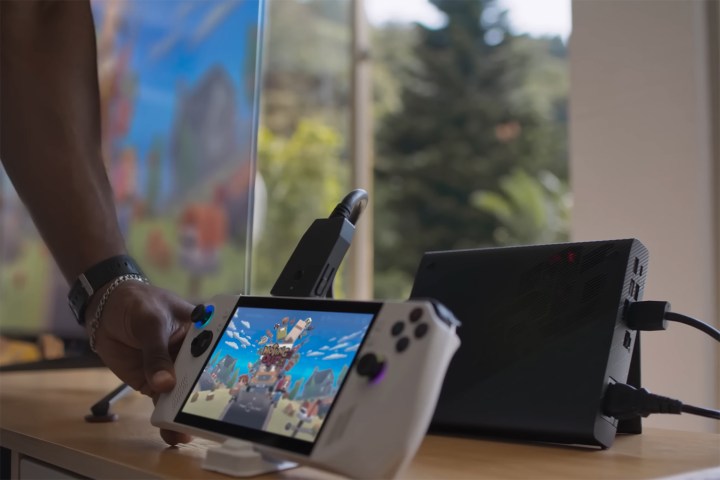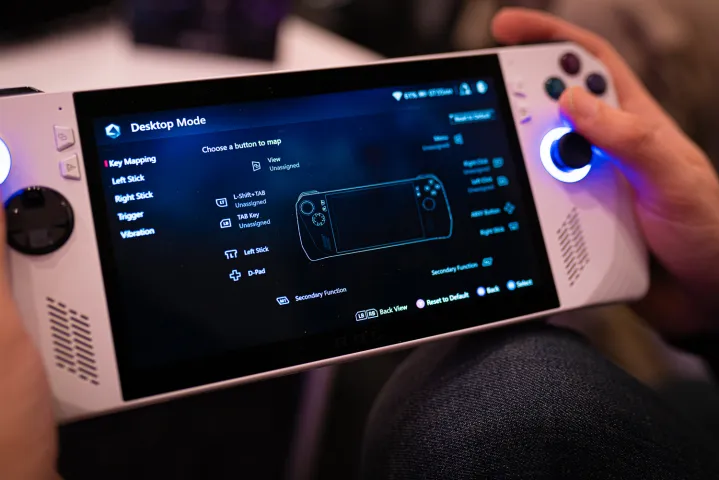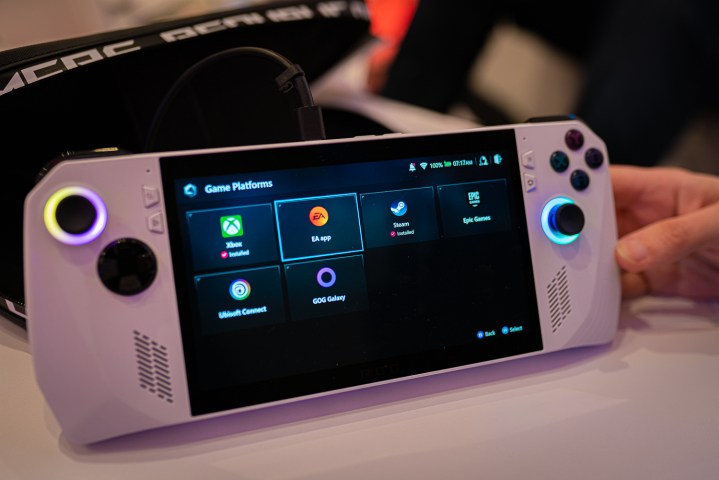The moment I played a game on Asus’ upcoming ROG Ally, it felt too good to be real. Performance is off the charts, and the form factor is surprisingly comfortable. And the more I thought about the ROG Ally after using it, the more I actually pondered replacing my high-end gaming desktop with the handheld.
I’ve been clear about my worries about Windows 11 on a handheld like this, and although we hear about efficiency with each new launch from AMD, Intel, and Nvidia, it’s hard to feel those gains in everyday use. But the ROG Ally not only looks like the winner against the Steam Deck, it also might just replace your desktop PC.
We need to talk about efficiency

We’ve all heard about performance-per-watt metrics and bold claims about efficiency ad nauseum, but in the enthusiast PC space that’s dominated by peak performance, they often fall on deaf ears. But he ROG Ally is a showcase of what efficiency advances can materialize as.
The ROG Ally uses AMD’s new Ryzen Z1 processor, which is built with Zen 4 CPU cores and RDNA 3 GPU cores. It’s faster than the Steam Deck’s APU, and efficiency advances are what make a form factor like the ROG Ally even possible.
That’s not what gets me excited about the handheld, though. The updated XG Mobile is. Asus released this external GPU dock a couple of years ago, and the most recent iteration packs a mobile RTX 4090 inside. The ROG Ally supports the proprietary connection, allowing you to plop down at your desk, dock the ROG Ally to the external GPU, and play games at a higher performance level.

It’s just the level of performance that makes a difference. As we’ve seen with
I wouldn’t have any issues replacing a desktop with the ROG Ally and XG Mobile. It’s an expensive combo — we don’t know how much the ROG Ally costs yet, and the XG Mobile is $2,000 — but not any more expensive than a high-end gaming desktop packing a GPU like the RTX 3090 Ti. And that’s with performance that can rival such a high-end PC.
It’s a testament to the advancements made in efficiency over the last several generations. There’s no doubt that a desktop
Windows 11 does the trick

There’s another aspect that helps the ROG Ally as a full-fledged desktop: Windows 11. The ROG Ally isn’t the first Windows 11 gaming handheld, but it’s the first with an ecosystem designed to work with
That comes courtesy of Armoury Crate, Asus’ gaming-focused management app. Unlike the Steam Deck, which needs to reboot if you want to switch between gaming mode and desktop mode, everything runs over the top of
Even better, there’s a dedicated button to launch Armoury Crate. There were a handful of times while testing the ROG Ally where I would end up on the desktop or in a Windows menu while poking around. And no matter how far I went, I could always click the button and go right back to the handheld-focused UI.

It’s not hard using
Armoury Crate was built to interact with
I don’t want to use the ROG Ally with

You don’t ever have to interact with the
Built for more

Between
In addition, the charger doesn’t just hook into the wall. It uses USB-C, and along with that connection, the charger also includes a USB port and an HDMI 2.0 output. Even if you don’t have XG Mobile, you can hook the ROG Ally up to an external monitor without buying any additional accessories.
I still need time with the ROG Ally to test where it excels and where it falls behind, but it’s already impressing me. The handheld experience is great, there’s no doubt about that. But I wouldn’t be shocked to see the device replace some high-end gaming PCs when combined with the XG Mobile, and that’s something to get excited about.




